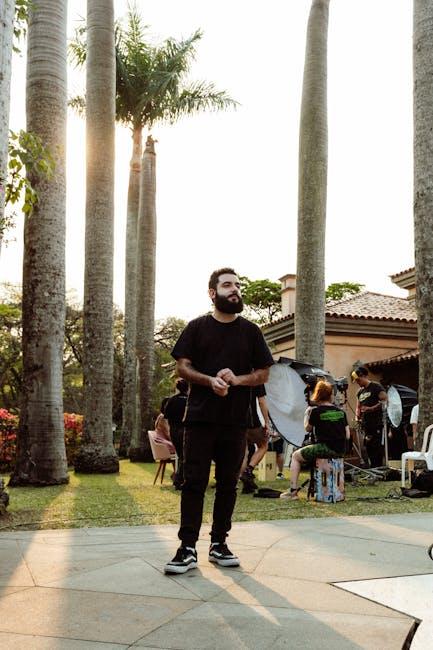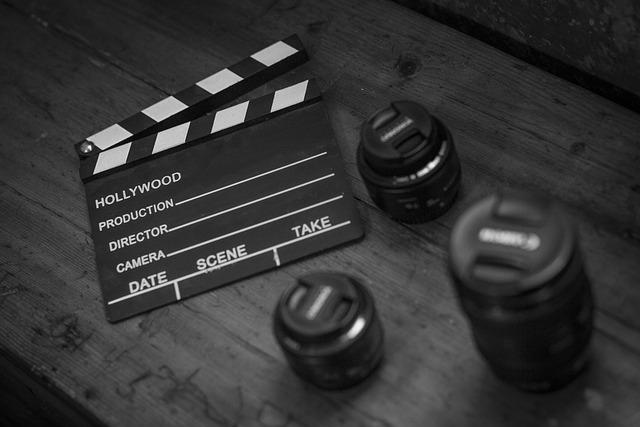In the world of filmmaking, where imagination knows no bounds, the choice between real locations and studio sets serves as a pivotal decision that shapes the essence of storytelling. From the sweeping vistas of untouched landscapes to the meticulously crafted environments of a soundstage, each option offers a unique canvas for directors and cinematographers to paint their narratives. This exploration delves into the dynamic interplay between authenticity and artifice, examining how each approach influences not only the visual aesthetic but also the emotional resonance of a film. As we journey through the realms of reality and illusion, we uncover the nuanced impact these choices have on the craft of cinema, inviting a deeper appreciation for the art of visual storytelling. Crafting Authenticity: The Role of Real Locations in Storytelling”>
Crafting Authenticity: The Role of Real Locations in Storytelling”>
Crafting Authenticity: The Role of Real Locations in Storytelling
In the art of storytelling, the choice between real locations and studio sets is pivotal in crafting a sense of authenticity. Real locations provide a tangible connection to the narrative, allowing filmmakers to harness the natural ambiance and historical context that a studio simply cannot replicate. The textures, sounds, and even the imperfections of real-world settings contribute to a more immersive experience for the audience.
- Authentic Atmosphere: The unique atmosphere of real locations often adds depth and realism.
- Emotional Resonance: Genuine settings can evoke stronger emotional responses from viewers.
- Historical Context: Locations steeped in history enrich the story’s backdrop.
However, the allure of real locations comes with its own set of challenges, such as logistical constraints and uncontrollable variables. Yet, these hurdles can sometimes lead to unexpected creative breakthroughs, pushing filmmakers to innovate and adapt. In contrast, studio sets offer controlled environments, yet they may lack the spontaneous magic that real locations often possess. Striking a balance between these two elements is crucial for filmmakers striving to deliver a compelling and authentic narrative.
 Studio Sets: The Magic of Controlled Environments”>
Studio Sets: The Magic of Controlled Environments”>
Studio Sets: The Magic of Controlled Environments
Studio sets offer filmmakers a controlled environment where every detail can be meticulously crafted to serve the story. This control extends to lighting, sound, and even weather conditions, ensuring that each element aligns perfectly with the director’s vision. The ability to manipulate these factors can lead to a heightened sense of realism or an entirely fantastical world, depending on the film’s needs.
- Consistent Lighting: Achieve perfect lighting setups that remain consistent throughout filming.
- Sound Control: Minimize unwanted noise and create the ideal acoustics for dialogue and sound effects.
- Weather Manipulation: Eliminate weather-related disruptions, ensuring continuity across scenes.
- Customizable Design: Build unique, tailor-made sets that can transport audiences to any location or era.
The magic of studio sets lies in their ability to transform imagination into reality. With the right team and resources, a studio can become an ancient castle, a futuristic city, or an alien planet, all within the confines of a controlled space.
Balancing Act: When to Choose Reality Over Replication
Choosing between real locations and studio sets often requires a delicate balancing act. Authenticity is a significant factor; real locations can provide a tangible sense of place that a studio set might struggle to replicate. This is especially crucial for stories deeply rooted in specific cultures or historical contexts. However, filmmakers must weigh this against the control and flexibility offered by studio sets, where weather, lighting, and sound can be meticulously managed.
- Real Locations:
- Genuine atmosphere and ambiance
- Potentially more cost-effective for certain scenes
- Unique, unreplicable backdrops
- Studio Sets:
- Complete control over the environment
- Ease of access to facilities and equipment
- Ability to recreate any location, anytime
Ultimately, the decision hinges on the narrative’s demands and the director’s vision. Whether capturing the raw energy of a bustling city street or crafting a fantastical world from scratch, each choice brings its own set of challenges and opportunities.

Guidelines for Filmmakers: Optimizing Location Decisions
In the art of filmmaking, choosing between real locations and studio sets can profoundly influence the narrative and production dynamics. Real locations offer authenticity, enhancing the film’s believability by embedding the story within a tangible world. They provide natural lighting and unique atmospheres that can be challenging to replicate in a studio. However, they often come with constraints like weather unpredictability and logistical challenges.
- Authenticity: Real locations provide a sense of realism that can be crucial for certain narratives.
- Atmosphere: Unique settings contribute to the film’s mood and aesthetic.
On the other hand, studio sets allow for complete creative control. Filmmakers can manipulate every aspect of the environment, from lighting to set design, ensuring consistency across scenes. Studios eliminate the unpredictability of external factors, making them ideal for scenes that require intricate technical setups.
- Control: Every detail can be tailored to fit the director’s vision.
- Consistency: Ensures uniformity across different takes and scenes.

